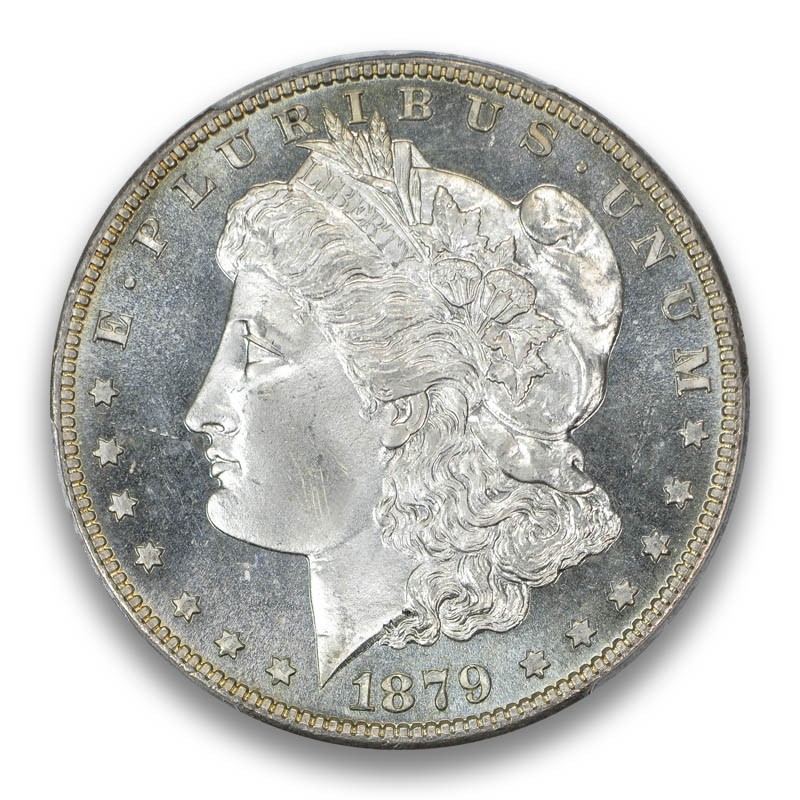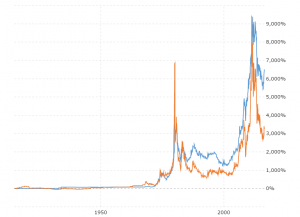What Is Coin (Mint) Luster?
If you are a coin collector, or have any experience in numismatics then you’ve more than likely heard the term “mint luster” or “coin luster” (lustre). It’s a common occurrence in coins, but it’s a difficult thing to describe. Not only is it difficult to describe, but a great deal of people don’t know how it occurs. In fact the de facto guide on coins, The American Numismatic Associations “Official ANA Grading Standard for the United States Coins” only offers 2 sentences dedicated to mint luster. In the following article we’re going to discuss what mint luster is, how it is produced, and why it’s important.
Novice collectors often mistake mint frost (the part that looks like powdered sugar) as a negative because they think a coin should be shiny and proof-like. When in fact mint frost is a coveted trait.
How Is Mint Luster Created?
Mint luster is formed at the very start of a coin’s life; the minting process. The surface of a die that strikes a planchet (a coin blank before it is stamped) has tiny irregularities. When the coin blank is struck by a die, the metal flows into the recesses of the die design and outward towards the rim. The irregularities of die are reproduced on the coin. More importantly though, under intense pressure from the stamping, heat is produced and the flowing metal creates faint, microscopic lines onto the die called “flow lines.” Over time, with constant stamping, these flow lines become more pronounced on the die (much in the way that a tiny creek can become a larger stream). These flow lines are transferred onto the coin in kind of a microscopic sunburst pattern as they start in the center and spread out towards the edge (also called “radials”). They are most visible towards the outer edge of the coin, but are also visible on raised design elements, such as a face, letters and the date. Under a microscope the radials appear as tiny peaks and valleys. Because of these microscopic variances, when a coin with mint luster is viewed, the diffusion of light appears in hundreds of different directions. This diffusion of light is soft and is often referred to as “mint frost” because it looks as if the coin has powdered sugar on it.
The Cartwheel Effect
This is a common term for how a coin with mint luster will act/appear. The cartwheel effect is very similar to the effect exhibited by a rapidly rotating stagecoach wheel. The wheel will appear to be rotating very slowly in the opposite direction of the actual rotating wheel. If you were to take a coin with full mint luster and hold it at an angle of a single light source, as you tilt the coin the diffused light will appear to rotate clockwise and counter-clockwise as you continue to tilt and rotate the coin on its axis.
TIP: At a coin show it may be difficult to observe coin luster. This is because there are a myriad of light sources in the room and the usual presence of the bright dealer’s lamp directly overhead of the coin you are inspecting. Try and view the coin with the lamp off to the side to avoid the direct light.
Why Is Mint Luster Important?
Before we move on, it’s important to note that not all coins exhibit luster. Larger coins such as Morgan Dollars exhibit the most luster while smaller coins, and coins of certain metal content simply just don’t. Mint luster is very helpful when determining the grade of a coin. Since it’s a very noticeable trait that you cannot forge, having full mint luster on a coin makes grading an uncirculated coin that much easier. As a coin exhibits wear, the cartwheel effect will appear broken and wear down near the center at first. Luster along the edges will be the last to wear along with the protected areas and the field. Using a loupe or a pocket microscope can help you in determining if a coin has mint luster.



















Does luster increase the value of a coin
It can. Something that is very subjective is “eye appeal.” For example, two coins could have the exact same grade of MS65, but one will have greater eye appeal. This could be in the form of toning, full luster, etc. And this eye appeal sometimes commands a higher price.
Very succinct explanation of grade, luster, toning.
I have some coins to sale just not sure how where to star